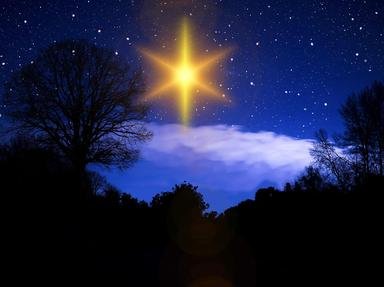Quiz Answer Key and Fun Facts
1. This French decoupage kit allows you to set up your own paper Nativity scene. It shows a number of different figures that you can include: the Holy Family, an angel, some sheep (and maybe goats), some men bearing gifts, shepherds, and a couple of women. If you want to decide which of these figures belongs in a Biblically-accurate representation of the birth of Jesus, which New Testament books should you consult?
2. My Nativity set shows the Holy Family in a wooden stable, while this German Nativity scene shows them in a cave. Both are commonly seen as the location of the manger in which Jesus was lain after His birth. Does the Bible offer any evidence as to the location of this manger?
3. Many Nativity sets show the roof of the stable, and possibly the ground around it, as covered in snow. Is this historically accurate?
4. Many Nativity scenes include animals, particularly a donkey and one or more oxen. While the Gospels do not mention any animals, it makes sense they would be in a place where a manger is located. The choice of animals to include is probably based on a prophecy from what Old Testament book?
5. Mary is traditionally shown in religious art as wearing blue (or blue and white) robes. What color were her clothes most likely to have been?
6. According to the Bible, some local shepherds heard the news of the birth of Jesus from a heavenly source. According to Luke (KJV), what is the name of the angel responsible for delivering this message?
7. Many Nativity scenes include angels flying around the site of the manger. Where in the Bible is this described?
8. This Provencale Crèche has a number of unusual features, including the starfish on top of the stable. What traditional feature is it most likely to be representing?
9. As is common in many Nativity displays, the magi are shown here arriving at the stable. Which of these facts do Biblical scholars use to support their belief that the magi arrived significantly later than the night of Jesus' birth?
10. Many Nativity scenes do not confine themselves to that single event, but have multiple tableaux depicting other events from Jesus' infancy, as described in the Gospels. Which such event is depicted here?
Source: Author
looney_tunes
This quiz was reviewed by FunTrivia editor
agony before going online.
Any errors found in FunTrivia content are routinely corrected through our feedback system.
